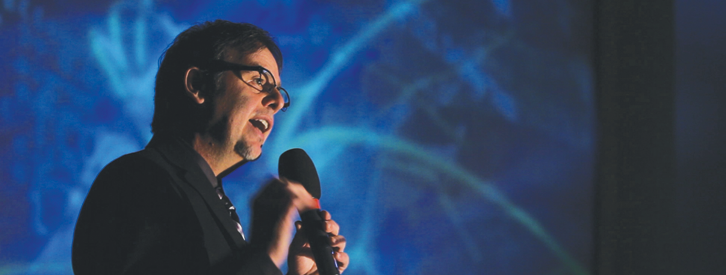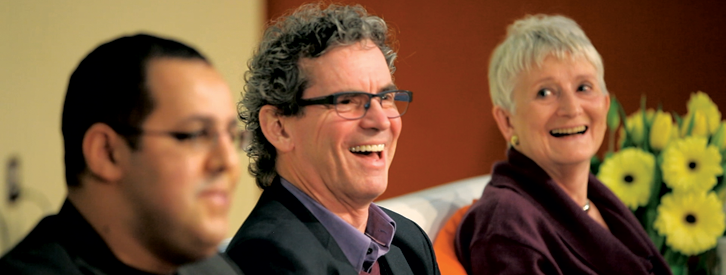The future of openness on the Internet is currently the subject of wide debate. Having started with engineers defining standards through informal mechanisms, it has grown through a multi-stakeholder approach, taking in the private sector, public sector, informal and formal groups. Recent debates focusing on governance of the Internet have seen opponents of the ITU proposals argue that existing norms, such as Article 19 of the Universal Declaration of Human Rights, already exist and can be applied to the Internet.
Regardless of how this issue plays out, the Internet itself is not a level playing field, and there are differences between regions in both content availability and speed of access. New stories about censorship and blocking of content are being heard with alarming regularity. At an extreme level, these could be about China and its Great Firewall, which is already in place, or Iran and the so-called Halal Internet that is always just around the corner. Or it could be at a lower level, with particular news sites or social media accounts being blocked or filtered in individual countries.
In some cases, the blocks that are put in place could be for copyright purposes, such as the recently reported blocking of torrent sites by UK Internet service providers (ISPs). Yet it is often for political reasons, as in Iran, where Voice of Russia’s Persian service became the latest high profile case in a long list of Farsi news web sites to be blocked.
Blocking of content can take place at many different points, sometimes for the same content. For example, last year’s now infamous YouTube video “Innocence of Muslims” was responsible for social unrest in several countries, leading to swift blocks and shutdowns of Google services by authorities and ISPs in Bangladesh, Pakistan, Syria, and other countries. Google itself temporarily blocked access to the video in Libya and Egypt due to the violent protests that took place there. And several months later, Egypt’s administrative court responded to a formal complaint when it ordered the blocking of YouTube for a month in February 2013.
As the Internet grows in importance and size, the challenge to maintain the free flow of information it has opened up grows considerably. Repressive countries are learning from each other how to block content, and putting in place ever more sophisticated censorship systems. Aside from the issue of where the responsibility lies for keeping the Internet open, there is also the question of who will pay for information to reach Internet users globally.
The cost of delivering services on the Internet has, in some ways, reduced significantly in the past decade. As organisations began to increasingly use Content Delivery Networks (CDNs) for delivering whole websites, costs per GB fell by over 95% during the 2000s. Now, CDN pricing of $0.02 per GB is not unusual for large contracts.
Many organisations have contracts with one or more international CDNs for distribution of their content. But is it enough to just work with the “big players” in this field? Akamai, for example, carry between 15-30% of global Internet traffic, so using them to distribute web and rich media content can give a significant performance boost for high-traffic web sites.
A relationship with a CDN, while increasing performance generally for content providers, will not come with any guarantees that content will perform well or be available everywhere. In 2005 Akamai bought Speedera, after a long-standing legal dispute over allegedly infringed patents, and with it came a CDN presence in China.
However, they recognize that delivery of content into China, and their own availability there, has additional challenges. Akamai’s terms of service include a section on the different rules for China, including the stipulation that the organisation “agrees to supply Akamai with any documentation or registration information (including origin IP addresses) reasonably requested by Akamai.”
In this case, the CDN is effectively acting as an additional gatekeeper, and can make a decision as to whether or not it will carry the host organisation’s content into the country. This is ultimately a commercial decision for the CDN, who will most likely err on the side of caution in approving content for distribution into that country.
Level 3, who also operate CDN services in mainland China, have a network map showing the size of their own network, both fiber and leased. There is a lack of presence across Asia, Africa and much of the Middle East, as they prioritise markets for commercial gain above creating a level playing field for carrying content. And here the lack of bandwidth to end users also plays a major role. As recently as 2009, Reuters reported on a South African IT company getting data transferred faster via carrier pigeon than over the Internet.
The speed of Internet connections and availability of international content will play a major part in defining how the Internet looks within many countries. Again, we can look to China to see how their Internet ecosystem has built up to provide a completely different picture of the global Internet. The performance and availability of international services are limited by the country’s “Great Firewall of China”. These limits have allowed China to grow its own equivalent services. With access to Twitter and Facebook restricted, homegrown variants are instead the place for social media conversations to happen. In a review of China’s social, digital and mobile situation, We Are Social reported earlier this year that 89% of China’s Internet users have used Weibo “at some time or other”.
There are barriers for all content providers, often at national levels. A global distribution strategy needs to take into account the difficulty, and the cost, of distributing content into places where the Internet is not open, and where individuals’ rights to access free and independent media are being denied.
With many large information providers relying on CDN delivery, there will remain a focus on achieving the lowest cost per GB possible. This focus is in direct contrast to the investment that will be required for reaching audiences in censored countries. Distribution strategies for global organisations will need to start taking into account the additional cost of reaching potential audiences in countries where their standard CDN arrangements are insufficient.
There will also be cases where content providers will need to directly help their potential audience to access the Internet in the first place. In Iran, a young, technically aware population of users are increasingly using virtual private networks (VPNs) and circumvention software to access the unfiltered Internet. These services are in many cases provided by small commercial companies operating within the country, but also by larger organisations working across international borders. Despite trade embargoes, some VPNs encourage and help users in the country to mask their IP addresses, or get relatives to purchase for them.
In other cases, the content providers will themselves help their potential audience to access the open Internet so that they can browse web content freely. In Citizen Lab’s “Casting a Wider Net”, the effectiveness of this method was studied, focusing on BBC’s language services deploying Psiphon’s web-proxy technology. BBC and the United States’ Broadcasting Board of Governors (BBG) services are leading the way for public news broadcasters in trying to get their content accessed in censored countries.
Since that study was released, the German public service broadcaster Deutsche Welle has also started reaching out to its audience through circumvention technologies, recognising that the cost of distribution into restrictive communication environments (particularly China and Iran) is more complicated than its wider Internet distribution challenges. Their approach has seen them push circumvention technologies through their various web presences, including social media and the front page of their language service sites.
The cost of bypassing national censorship with software increases the distribution costs and budgets need to be adjusted accordingly. Beyond the delivery costs themselves, the additional research and development costs taken on by service providers in this field are very high, as they need to continually redevelop technologies to stay ahead of the censors. China recently introduced new technology to detect and close down the availability of VPNs, proving that methods of reaching audiences will have to continually evolve, which will require further investment in new technologies that may or may not pay off for the content providers.
This activity should be recognised as part of the activity of Internet distribution rather than something experimental or as a separate project in its own right. Before Internet delivery became the priority for broadcasters, shortwave transmitters were built to try to deliver content into censored regions. This technology was a direct cost that was borne by broadcast organisations, and was budgeted for accordingly. Now that many services are moving to Internet distribution, there will also be some costs involved in transmitting web content into countries where services are disrupted through censorship.
For a commercial organisation, the need for a return on investment may make such an activity prohibitive. If a commercial news broadcaster becomes blocked in Iran, how important is it that its content be seen by an audience there? Without being able to sell its product directly, or benefit from advertising revenues in the country, the distribution issue becomes a cost that may not be able to be absorbed.
Public service organisations have an opportunity to lead the way both in pushing their content into censored markets, and publicly highlighting areas where censorship of their content is taking place. The BBC has, on many occasions, condemned the blocking of its radio and television services, most recently in February 2013, releasing a statement5 to the media to highlight the blocking of English shortwave radio broadcasts in China. This example follows several statements regarding the Persian television service, but again misses an opportunity to use the same language with reference to the blocking of its content over the Internet.
While the discussion around Internet governance continues, we need to remember that there are costs associated with maintaining openness on the Internet as “business as usual”, involving both the network providers and the content owners. They both have a part to play in trying to get unrestricted content onto the screens of Internet users, recognising that both technical challenges and costs increase when distributing to censored audiences.
About Karl Kathuria
Karl is currently the VP of Commercial Management for Psiphon, Toronto-based providers of circumvention technologies on multiple platforms. He manages business relationships with broadcasters and organisations who are looking to reach audiences in countries where Internet content is blocked or filtered. Prior to this, he spent over 10 years at the BBC, managing the distribution of World Service Internet content to a global audience. In this role, he faced the challenge of delivering news content into countries where censorship is prevalent. Karl also led a project with the Citizen Lab team in 2011, studying the impact of the BBC’s content distribution strategies in China and Iran, published as “Casting a Wider Net.”










